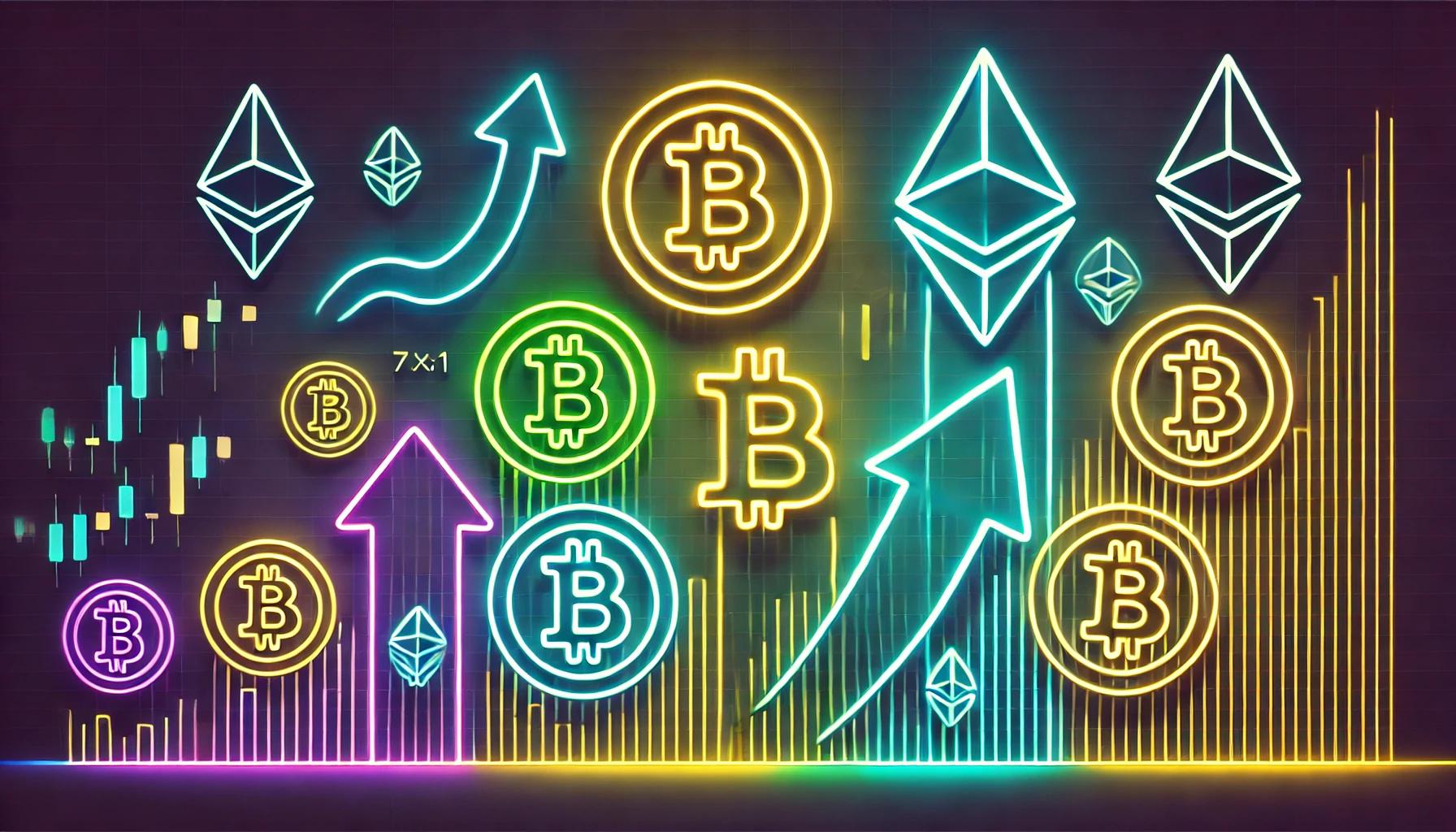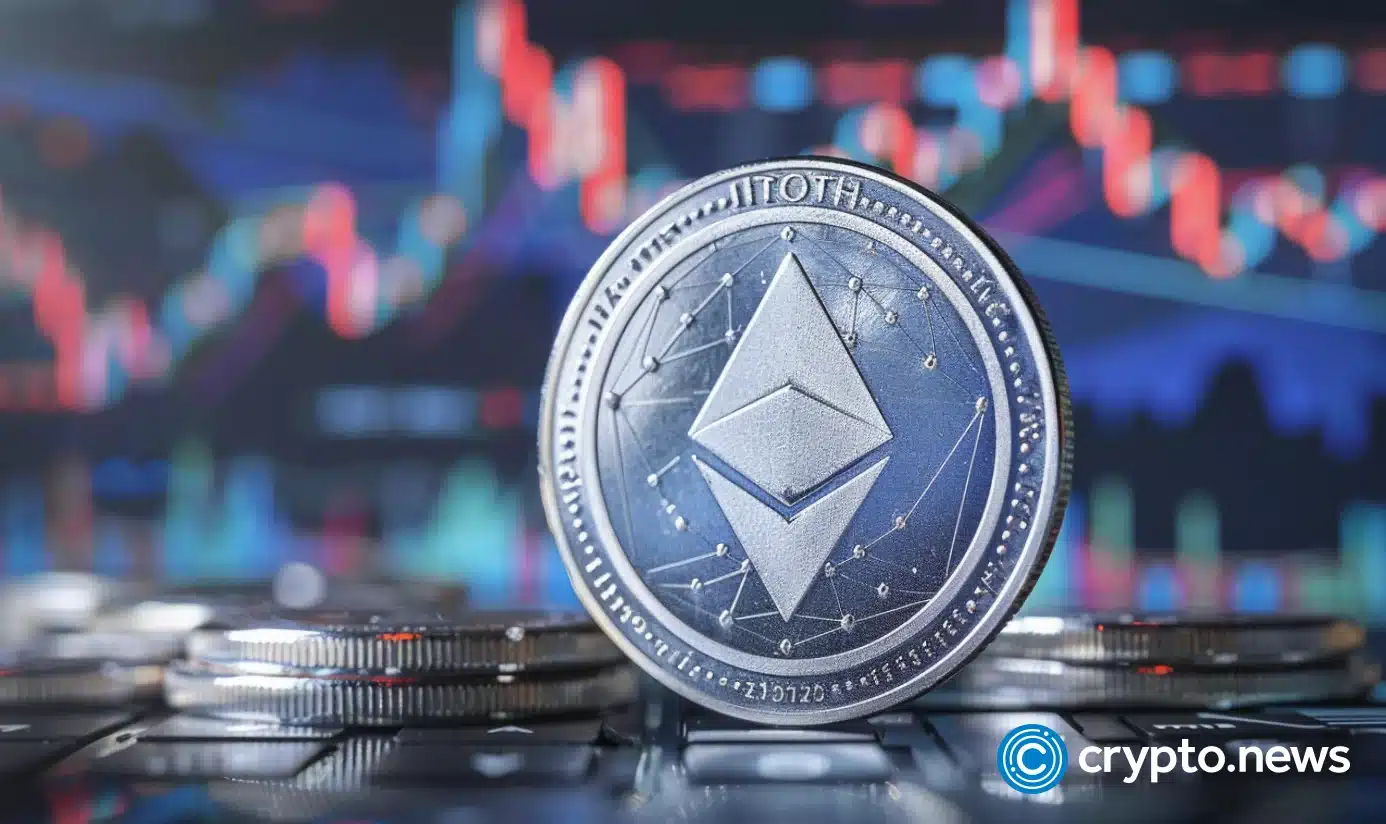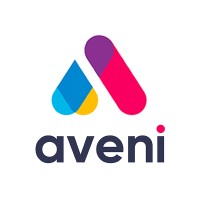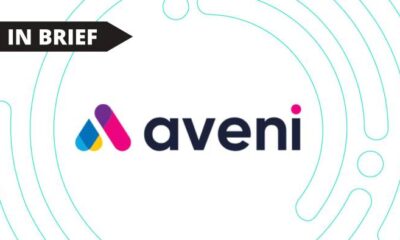Markets
What’s missing from MiCA’s comprehensive crypto manifesto?

Disclosure: The views and opinions expressed here belong solely to the author and do not represent the views and opinions of the crypto.news editorial team.
In April 2023, the European Union released a comprehensive piece of legislation to finally reign in the cryptocurrency and blockchain industry. Regulation of cryptoasset markets (MiCA) is a bold and pioneering initiative that aims to apply a unified regulatory framework to the sector and establish clearer laws for crypto asset service providers and token issuers.
Seen as a milestone in the cryptocurrency regulatory landscape, MiCA recently approved a provision to address stablecoinsthat have long been seen as complicated assets to regulate due to their unclear classification and common use in cross-border transactions. Following the approved provision, Circle, the issuer of the USDC stablecoin, became the first stablecoin issuer be formally recognized as compliant with EU cryptocurrency legislation.
The new status granted to the Circle has led many to consider the implications of MiCA in 160 billion dollars aggregate supply of stablecoins, as well as the broader cryptocurrency and web3 economy.
While the idea behind the most comprehensive attempt to regulate cryptocurrencies is to protect investors, hold accountable organizations that issue digital assets and provide services, onboard new users and foster innovation while ensuring competition, it will take some time to assess its full impact.
The idea for MiCA was born out of a wave of ICOs in 2017 and 2018 that raised concerns about scams, fraud, and other manipulations that could undermine financial stability within the European bloc. After years of research, due diligence, and good intentions, MiCA deserves much credit for its approach to balancing regulation with innovation — a clear recognition of the technological and commercial advantages of cryptocurrencies and blockchain. Furthermore, MiCA reinforces stability, investor confidence, transparency, and oversight with its comprehensive legal framework.
But MiCA has some blind spots.
While the regulatory framework recognizes the importance of bridging crypto service providers and traditional finance, it doesn’t offer much on how to make this a reality. Indeed, the growing overlap of tradfi and digital assets bodes well for driving adoption and has likely contributed to a maturing crypto ecosystem, but MiCA places limitations on stablecoins that seem counterproductive.
Non-euro stablecoins cannot be used in transactions for goods and services and face daily limitations on the number of transactions (up to one million) and their total value (€200 million). This essentially places usage limits on USDC and USDTthe two major stablecoins, even though they are certified as MiCA compliant.
And because stablecoins are so crucial to facilitating transactions, enabling DeFi, and powering nearly every aspect of the industry, these restrictions could impact liquidity and halt DeFi innovation and activity, undermining a core pillar of MiCA’s mission.
Furthermore, these limitations are compounded by MiCA’s failure to emphasize interoperability, one of the industry’s most pressing needs, nor does it appear interested in encouraging crypto-fiat payment solutions — important avenues for bolstering liquidity and spurring innovation beyond cryptocurrencies.
While it is too early to know how MiCA’s stablecoin approach will play out, European regulators can do more to address interoperability and payments across ecosystems to future-proof their economies and avoid market fragmentation. This can be improved by working with EU organizations such as Horizon Europe and the European Innovation Council to find innovative startups that address areas neglected by MiCA.
For example, Kima, an asset-agnostic, peer-to-peer money transfer and payment protocol, provides an interoperable settlement layer for interchain and crypto-fiat transactions. By removing the barriers between blockchains and between traditional financial instruments and blockchain networks or decentralized applications, the Kima protocol enables developers to access greater amounts of liquidity. This also benefits non-crypto native users and financial institutions by allowing funds to flow in all directions.
MiCA will undoubtedly serve as a standard-bearer for cryptocurrency regulation, guiding other nations and economic blocs on how to regulate a growing, complex, and volatile market that offers much promise. It is important that, in its righteous desire to protect its monetary interests, it does not neglect other areas that impact the industry’s ability to grow.
The EU has demonstrated a willingness to adapt and study trends as they emerge, and in the fast-paced world of cryptocurrencies, this is necessary to ensure appropriate measures are taken to protect investors as well as the integrity of the entire sector.
Markets
Crypto Markets Rebound as Spot Bitcoin ETFs Attract Massive Inflows

This week saw $722 million worth of Bitcoin spot ETF inflows, including the largest daily inflow in a month.
Cryptocurrency markets rallied on Wednesday, driven by inflows into spot Bitcoin exchange-traded funds (ETFs).
The price of Bitcoin (BTC) is up 3% over the past 24 hours to last change hands at $65,200, according to CoinGecko. Ethereum (ETH) is up 2% and is trading at $3,471. Solana (SUN) and Polkadot (POINT) increased by 4%.
Bitcoin spot ETFs saw $422 million in daily inflows on Tuesday, the highest in the past 30 days, according to Far side data, . The all-time record for a single day was $1.05 billion on March 12.
Among Tuesday’s top contributors, BlackRock’s IBIT led with $260 million in inflows, followed by Fidelity’s FBTC with $61 million. This week has already seen more than $722 million in inflows.
Among the top 100 cryptocurrencies by market cap, Worldcoin (WLD) led with a 28% increase, followed by Helium (HNT) with 20% and Lido DAO (LDO) with 15%.
Worldcoin, a decentralized identity project led by OpenAI CEO Sam Altman, announced is extending the lockups for early investors and team members. This means that tokens will be gradually released through 2029, instead of the original 2027 plan. Token unlocks are generally seen as a negative because they increase supply and early investors can sell their tokens for profit.
Meanwhile, XRP, the token of the XRP Ledger network, jumped 8% after the CME and CF benchmarks introduced new indices and reference rates for XRP.
U.S. stocks faced a downturn on Wednesday. The S&P 500 fell 1%, while the Nasdaq Composite and Dow Jones Industrial Average both fell 2%.
Markets
Altcoins on the cusp of a major breakout – WLD, AR, and INJ prices could surge by 20% in the coming days

Crypto markets appear to have been taken over by the bulls as major tokens have surged above their crucial resistance zone. Bitcoin surged above $65,000 while Ethereum was above $3,500, and XRP, which had remained passive for quite some time, surged over 40% in the past few days to hit $0.6. The uptrend has been captured in most altcoins, with Worldcoin (WLD), Arweave (AR), and Injective (INJ) leading the rally. Here’s what to expect for these tokens in the coming days.
Worldcoin (WLD) Price Analysis
O Worldcoin Price has been trading inside a descending wedge since it marked a new ATH near $12 in the final days of Q1 2024. The recent price action helped the price break out of the upper resistance of the wedge, breaking above the crucial resistance zone between $2.21 and $2.39. Market sentiments have changed, but technicals suggest that the bulls may remain passive for a while, which could offer some room for a bearish pullback.
The price broke out of the wedge with a significant increase in volume, but the current volume suggests that the bulls have taken a step back. Meanwhile, the RSI is about to reach the upper boundary, which could attract bearish forces. Additionally, the DMI has undergone a bullish crossover, but the decline in the ADX suggests that the rally may remain consolidated above the gains. Therefore, the WLD price is expected to maintain a horizontal consolidation between $3 and $3.3 and trigger a fresh rally to $4.4 during the next bullish rally.
Arweave (AR) Price Analysis
Arweave formed a strong base around $25, which helped the rally trigger a recovery during the bearish attack. Mt. Gox and German terror forced the price to fall below $20. However, the recent price action has brought the altcoin within the bullish range and raised expectations of maintaining a decent uptrend for a few more days.
AR price has hit one of the major resistances around $30 to $31.5, which could act as a strong base once overcome. The buying volume is slowly increasing, which could keep the bullish hopes for the rally high. Moreover, the supertrend has just flashed a buy signal, indicating a clean reversal of the trend. Therefore, AR price seems primed to maintain a healthy uptrend and rally above $40. However, if the bulls maintain a similar trend, making new highs above $50 may not be a tedious task for the bulls.
Price Analysis of Injective (INJ)
Injective price has been showing sharp strength since the beginning of the year and hence, the recent turnaround is expected to revive a good uptrend going forward. The bears engulfed the rally to a large extent, but the recent price action suggests that the bulls have regained their dominance. Therefore, INJ price is expected to maintain a strong uptrend with a bearish interference on the way down.
INJ price has surged above the lower support zone and has registered consecutive bullish candles. Although the volume is below the required levels, the OBV is maintaining a sharp uptrend. Furthermore, the Ichimoku cloud lead span B is heading towards the lead span A and a healthy crossover indicates the start of a new uptrend. However, INJ price may be out of the bears’ reach once it secures the resistance zone between $30.77 and $32.12, which seems to be on the horizon.
Markets
Ethereum at $3.5K, Exchange Supply Hits 34-Month High

Ethereum (ETH) supply on exchanges has hit a 34-month high as the asset’s price surpassed the $3,500 mark.
ETH has risen 2.3% over the past 24 hours and is trading at $3,490 at the time of writing. The second-largest cryptocurrency — with a market cap of $419 billion — briefly touched an intraday high of $3,517 earlier today.
ETH Price, Whale Activity, RSI, and Exchange Supply – July 17 | Source: Santiment
Ethereum’s daily trading volume also increased by 7.6% to reach $19.8 billion.
According to data provided by Santiment, the supply of Ethereum on exchanges has reached $19.52 million ETH. This level was last seen in September 2021, when the asset was trading around the same price.
On the other hand, data from the market intelligence platform shows that the number of whale transactions has fallen by 12% in the last day — falling from 8,730 to 7,629 unique transactions per day.
The move shows that the supply of Ethereum on exchanges has been increasing with small deposits rather than large transactions from whales.
Additionally, the ETH Relative Strength Index (RSI) is currently hovering at the 60-mark, per Santiment. The indicator shows that Ethereum is slightly overbought at this price point, but it may not be in a critical position due to its large market cap.
One of the main drivers of Ethereum price increase is ETH spot expectations ETFs in the US Investment products are scheduled to start trading on July 23rd.
Markets
Bits + Beeps: How to Play the ‘Trump Trade’ in Cryptocurrencies After the Assassination Attempt

Also, how much will the Fed cut rates (and when)? What will be the inflows into ETH ETFs? And what is the near future for Bitcoin?
Posted on July 17, 2024 at 12:00 PM EST.
Listen to the episode at Apple Podcasts, Spotify, Capsules, Source, Podcast Addict, Pocket molds, Amazon Musicor on your favorite podcast platform.
In this episode of Bits + Bips, hosts James Seyffart, Alex Kruger and Joe McCann, joined by guest Jack Platts, dive into the market reaction to the recent assassination attempt on former President Donald Trump, analyzing how this event will influence the 2024 US presidential election and the cryptocurrency markets.
They also cover potential rate cuts: Could there be a cut in July? How big could the September rate cut be? Could the decision be influenced by the upcoming election?
They also give their predictions on what percentage of BTC ETF inflows the ETH ETFs will reach, and James talks about what he expects for Grayscale’s ETHE (hint: his outlook would be positive for ETH).
Finally, they delve into what’s next for Bitcoin as the German government runs out of BTC and Mt. Gox distributions begin. Just now?
Program Highlights:
- Whether Trump’s shooting decided the election and whether the event caused a “flight to safety”
- How election markets are becoming a place to watch election probabilities and whether cryptocurrencies “lean right”
- Whether rate cuts will occur in July or September and by how much they will cut: 25 bps or 50 bps
- How Joe sees the relationship between global liquidity cycles, rate cuts, and the potential rise of Bitcoin
- What are the new updates about Ethereum ETFs and their expected launch?
- Why Solana Hasn’t Performed Significantly Better Since Trump News
- What Market Breadth Indicates About the Current Market Rally and the Impact of Rates on Small Caps
- Everyone’s predictions on ETH ETF inflows and how much outflow we’ll see on Grayscale’s ETHE
- What’s Next for BTC After German Government Exits Bitcoin and Mt. Gox Giveaways Starting This Week
Hosts:
Guest:
- Jack PlattsCo-Founder and Managing Partner of Hypersphere Ventures
-

 DeFi11 months ago
DeFi11 months agoDeFi Technologies Appoints Andrew Forson to Board of Directors
-

 Fintech11 months ago
Fintech11 months agoUS Agencies Request Information on Bank-Fintech Dealings
-

 News11 months ago
News11 months agoBlock Investors Need More to Assess Crypto Unit’s Earnings Potential, Analysts Say — TradingView News
-

 DeFi11 months ago
DeFi11 months agoSwitchboard Revolutionizes DeFi with New Oracle Aggregator
-

 DeFi11 months ago
DeFi11 months agoIs Zypto Wallet a Reliable Choice for DeFi Users?
-

 News11 months ago
News11 months agoBitcoin and Technology Correlation Collapses Due to Excess Supply
-

 Fintech11 months ago
Fintech11 months agoWhat changes in financial regulation have impacted the development of financial technology?
-

 Fintech11 months ago
Fintech11 months agoScottish financial technology firm Aveni secures £11m to expand AI offering
-

 Fintech11 months ago
Fintech11 months agoScottish financial technology firm Aveni raises £11m to develop custom AI model for financial services
-

 News1 year ago
News1 year agoValueZone launches new tools to maximize earnings during the ongoing crypto summer
-

 Videos4 months ago
Videos4 months ago“Artificial intelligence is bringing us to a future that we may not survive” – Sco to Whitney Webb’s Waorting!
-

 Markets1 year ago
Markets1 year agoCrypto Expert Provides Analysis of Top Altcoins, Market Sees Slight Rise





